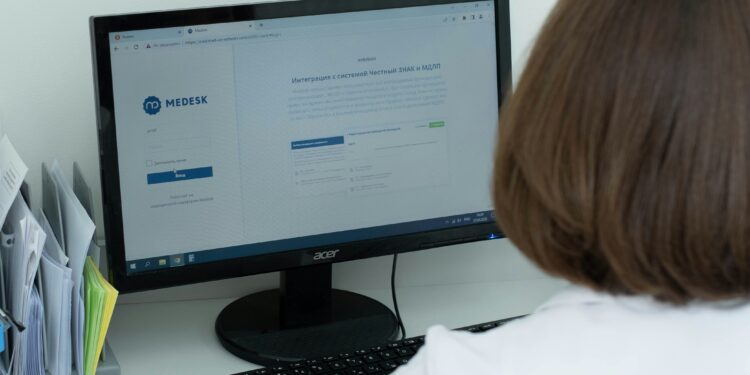You’re at home on a quiet Sunday evening, and something doesn’t feel right. Maybe you’re dizzy. Maybe your hair seems thinner. Maybe you forgot where you placed your keys again—and not in the usual way. Like millions of others, you open your phone and start typing. But here’s where things start to diverge—not based on your health, but on your language. Did you search “hair loss” or “androgenic alopecia”? “Lightheadedness” or “orthostatic hypotension”? “Memory issues” or “early-onset dementia”?
It turns out that what you type into Google or a symptom checker doesn’t just reflect what you’re experiencing—it shapes what you learn, what you fear, and what you do next. And more often than not, it does so without your knowledge.
People frequently search for information on symptoms like lightheadedness, hair loss, and memory loss, indicating a deep and constant public need for accessible, trustworthy health information. But the medical terminology used for the search dramatically impacts what appears on top of the search results. The medical sophistication of the language—technical vs. layman, clinical vs. conversational—not only dictates what content rises to the surface, but also skews how patients interpret their symptoms and whether they seek care.
Language as a Gatekeeper to Health Information
Search engines like Google and Bing have become de facto triage tools, long before a patient ever steps into a clinic. According to a 2023 Pew Research report, over 70% of U.S. adults have searched for health information online in the past year. Of those, more than half reported making decisions about treatment, diet, or medication based on what they found.
Yet few patients realize that search results are not neutral reflections of truth—they are curated by algorithms sensitive to word choice, reading level, click-through rates, and search engine optimization (SEO) strategies.
As a result, a patient’s level of medical literacy directly shapes their exposure to credible or questionable information. Someone who types “dizzy” may get articles from lifestyle blogs, while someone who searches “vestibular dysfunction” may land on peer-reviewed medical resources. The same symptom, filtered through different language, yields radically different pathways.
Sophistication and Stratification: The Problem with Jargon
This phenomenon creates a stratified internet of medical knowledge. At one end, basic symptom language often leads to clickbait, sponsored results, or oversimplified wellness articles. These may be more readable but are often less accurate or less nuanced.
At the other end, clinically coded searches—like “telogen effluvium” instead of “sudden hair loss”—return results from PubMed, Mayo Clinic, or NIH-funded sources. These are more rigorous, but also less accessible to non-specialists.
The problem is not simply one of access—it’s one of alignment. As digital health researcher Dr. Christina Nguyen notes in The Journal of Medical Internet Research, “Patients are often penalized in their search results for not knowing the language of diagnosis. The irony is that the people who need trustworthy information most are the least likely to find it.”
This digital divide reinforces existing disparities in health literacy and trust in healthcare systems. Those with more formal education or prior exposure to medical settings are more equipped to navigate the linguistic terrain of online health information. Others, particularly non-native English speakers or those with limited formal education, may be algorithmically steered toward commercialized or anecdotal content.
SEO in Medicine: Who Rises to the Top?
Behind every search result is a race for visibility. Healthcare systems, telemedicine platforms, and wellness blogs all optimize their pages for SEO, deliberately choosing phrasing, keyword density, and titles to rank highly for specific searches.
For example, if you search “hair loss,” you may find cosmetic clinics, vitamin companies, or sponsored blog posts—entities with the resources to game the SEO system. If you search “alopecia areata,” you’re more likely to find peer-reviewed literature, clinical trials, or institutional websites like NIH.
This creates a feedback loop, where the visibility of certain content reinforces its dominance—even if it isn’t the most accurate. Over time, this affects patient perception, not just of symptoms, but of treatment options, urgency, and even prognosis.
Behavior Shaped by Results
The consequences of this linguistic filter are not abstract. A 2022 study in Health Communication found that patients who searched using lay terminology were more likely to delay seeking in-person care, often reassured by wellness sites that minimized risk or overemphasized self-treatment.
Conversely, patients who searched with medicalized terms were more likely to seek formal diagnosis—but also more likely to experience health anxiety, overwhelmed by rare or serious conditions that dominated search results.
Neither path is optimal. What patients need is contextualized, tiered information—the kind that meets them where they are, but gradually guides them toward more precise understanding and action.
The Case for Plain Language Medicine—And Algorithmic Equity
Healthcare institutions have begun to recognize this problem. Many now produce “plain language” versions of medical pages designed to rank highly for common, non-specialist searches. The CDC’s Easy-to-Read Health Materials and MedlinePlus offer models of how accessible, vetted information can compete with the SEO-rich but shallow content that often floods early search results.
There is also a growing movement among digital health advocates and data scientists to audit algorithms for linguistic bias—to ensure that high-quality medical information is not inadvertently buried under commercial content simply because it uses less common terminology.
In a 2023 paper, the MAHA Coalition (Media and Health Advocacy) called for “search equity audits” to assess how well different symptom queries connect to clinically reliable resources. The goal is not to sanitize the internet of complexity, but to ensure that language doesn’t become a barrier to health literacy.
A Role for Providers—and for Platforms
Clinicians can also help. By asking patients what they searched, how they searched, and what they found, providers can identify linguistic gaps that shape understanding. They can recommend specific search terms or curated digital libraries. And they can remind patients that search results are a starting point—not a diagnosis.
Technology companies must do their part, too. Google’s partnership with the Mayo Clinic and other institutions to surface vetted health information for common conditions is a step in the right direction—but remains limited in scope and implementation.
If platforms can deploy AI to predict your next purchase, they can also design systems that elevate accessible, accurate health content, regardless of whether the query comes in clinical Latin or conversational English.
Conclusion: A More Literate Digital Health Future
In an era where the average patient may see their search bar before they see their doctor, we must acknowledge that search literacy is health literacy. The path to accurate, empowering care begins not just with symptoms, but with semantics.
To ensure equitable access to knowledge, we must create systems that bridge, not widen, the language gap—where “hair loss” and “alopecia” lead to the same truth, where “dizzy” and “hypotension” share the same roadmap, and where curiosity becomes not confusion, but clarity.















